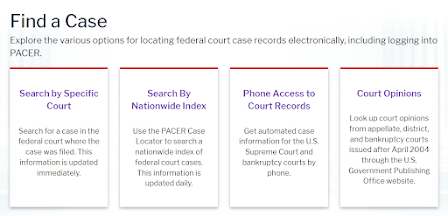There are multiple reasons a researcher could need access to a court case whether it is for personal use, research, the media and many more! PACER provides access to these federal cases for all who might need it.
What is PACER?
The Public Access to Court Electronic Records, otherwise known as PACER, is part of the Federal Judiciary. PACER's mission is:
"to provide the public with the broadest possible access to court records and to foster greater public understanding of the court system."
The program is funded through user fees set by the Judicial Conference of the United States, which is the policy-making body of the federal courts, and the fees are published in the Electronic Public Access Fee Schedule. All fees collected are then used to continue the maintenance of the PACER system. PACER was established in 1988 to improve public access to court information. Now, PACER provides access to over 1 billion documents at more than 200 federal courts. Some of those courts include the Oklahoma North District Court, the Oklahoma Western Bankruptcy Court, and the U.S. Court of Federal Claims.
The first step in using PACER is registering for a account. Depending on your purpose, there are different types of accounts including Case Search Only, Attorney Filers, Non-attorney Filers, and Group Billing. While there isn't a fee to register, there is a fee to access the court records.
Finding Cases
Once you have an account, there are multiple options in locating a federal court case.
Extra Resources!
Read a summary of PACER and what they offer!
Find learning aids, documentation, and videos.
.png)


Comments